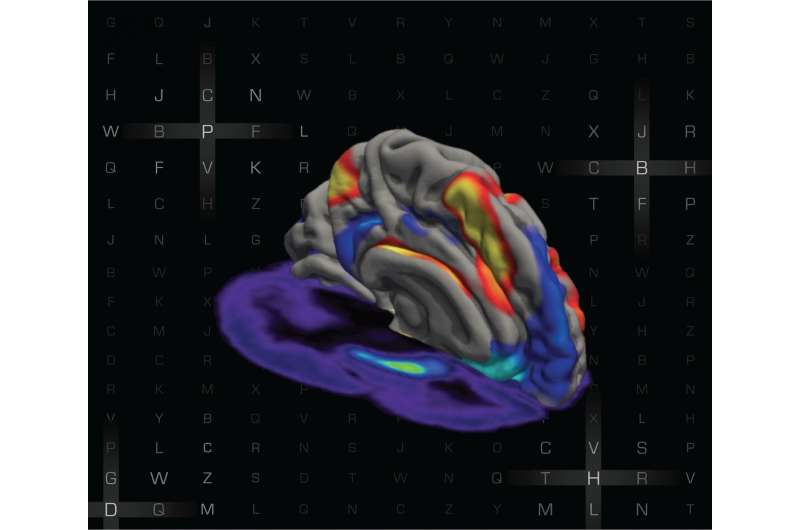Study reveals how interaction between neural networks changes during working memory

How does the cross-talk between brain networks change when working memory - the mental assembly of information needed to carry out a particular task—is engaged? Investigators at Massachusetts General Hospital (MGH) have found that dopamine signaling within the cerebral cortex can predict changes in the extent of communication between key brain networks during working memory. Their findings receiving online publication in Science Advances may lay the groundwork for studies of how disruptions in dopamine signaling contribute to working memory deficits that are characteristic of schizophrenia and other psychiatric disorders.
"Our principal finding is that dopamine signaling within the cortex predicts the extent to which the frontoparietal control network—which directly mediates working memory performance—becomes disconnected from the default network - which is active when the brain is awake but directed towards internal tasks, such as thinking about past or future events," says Joshua Roffman, MD, of the MGH Department of Psychiatry, lead and corresponding author of the paper. "The disengagement of these two networks is what allows us to shift our focus away from internal events and towards the performance of many types of cognitive tasks."
For their investigation the MGH team utilized the first device capable of simultaneous MRI and PET imaging, which is located at the Martinos Center for Biomedical Imaging at MGH. The ability to conduct both scans at the same time allows real-time measurement of both dopamine signaling—using a PET imaging agent that binds to D1 dopamine receptors - and the interaction of particular brain networks, as measured by functional MRI.
After first confirming that connection between the frontoparietal control network and the default network abruptly drops when healthy volunteers begin engaging in a working memory task, the researchers then showed that the disengagement between the two networks was strongest in individuals with the lowest cortical density of D1 receptors, which reflects higher dopamine levels. D1 receptor density did not affect how accurately study participants completed the memory task.
An associate professor of Psychiatry at Harvard Medical School, Roffman notes that this result is in line with previous studies in primate models showing that dopamine signaling on a cellular level is essential to a key aspect of working memory - determining which neural signals to pay attention to and which to ignore. This study is the first to examine how this cellular-level activity is expanded to a network-wide level in the brains of healthy humans. He states, "We hope that improved understanding of the role of dopamine in organizing cortical networks will lead us to better ways of improving working memory in patients with schizophrenia and other illnesses through optimized dopamine signaling."
More information: Dopamine D1 signaling organizes network dynamics underlying working memory, Science Advances, DOI: 10.1126/sciadv.1501672


















